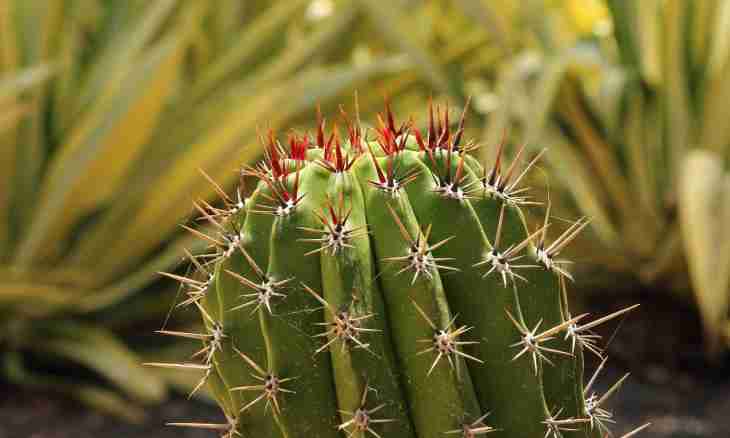Thorns instead of leaves have any of the plants growing in hot and dry places. As a result of thousands of years of evolution the cacti also got prickles. They carry out not only a protective role, but also give to a plant the chance to be pollinated.
Differences between leaves and prickles
Numerous plants have prickles, but in cacti the thorns are collected in bunches. Biologists drew a conclusion that prickles are an analog of leaves or scales of kidneys. However such changes quite essential. Mature prickles do not contain the same types of cages or fabrics which are characteristic of leaves of trees. Thorns consist only of the heart-shaped fibers surrounded with epidermis. They have neither ustyitsa, nor the closing cages.
Melliferous glands
At several species of cacti the thorns in each pazushny germ develop as secretion gland. They are known as "melliferous glands". These formations emit solution of sugar which attracts ants. Thorns in such places consist of freely located parenchyma cages which are allocated in intercellular space. The saved-up nectar is pushed out through small openings in epidermis up. Prickles of this type short and wide. They consist of thin-walled fibers. The smell helps to attract also the flying insects who pollinate cacti.
Protective thorns
Many cacti are protected from hot sunlight by a dense cover from thorns. The fact that more than a half of all species of cacti are adapted for dwelling in the dark or cool and damp highlands is surprising. Such plants will be dried quickly up by impact of sunlight in the desert. The appearance of the cacti living in cool or shady places often very much differs from the others. They have or only several long thorns or a set of very short. The plants growing in solar and hot deserts have to be completely covered with thorns. Pricks from such prickles very strong and painful. At many species of cacti thorns so soft that animals can eat them without any problem. Advantage of a cover consists of thorns in sunlight blocking, prevention of overheating of a plant, to reduction of evaporation of a chlorophyll and protection against damages. For example, at Mammillaria Plumosa of a cell of epidermis grow outside as long trikhoma, giving to a plant unusual appearance. At other types, thorns flat, thin and long. On the one hand, it does them too flexible and deprives a protection plant. On the other hand, they rather wide also give to a plant a shadow. Such prickles help a cactus to disappear among a grass in which it grows.

